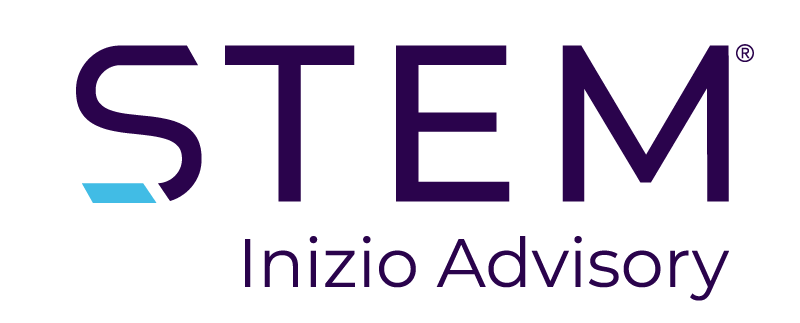5 Key Trends Shaping China’s Evolving Pharmaceutical Market in 2025
Authored by: Jane Barrett, Head of APAC, STEM
For over 11 years, STEM has supported the launch of numerous drugs and therapies in China, with clients now on their 6th, 7th, or even 9th product in-market- a testament to the maturity of pharma pipelines in the region. We’ve built a robust team of pharmaceutical experts with deep market knowledge, helping us deliver some of the highest-quality launch insights anywhere in the world. A key driver of this success is our deep analysis of field representative interactions with healthcare professionals (HCPs) across China.
Navigating the nuances of China’s healthcare market successfully starts with a deep understanding of the local culture, regulatory environment, and consumer expectations. As we gather data and experience, we’d like to share the trends and considerations we’re observing as the pharmaceutical industry in China continues to grow.
1. Renewed Momentum in Clinical Trials
China has always been a hub for clinical trials. Following a period of slowdown since 2020 and other regulatory tightening, trials are now accelerating rapidly. While local companies have been the main drivers of growth, the involvement of Western companies in trials run in China has also been increasing, with a rise from around 100 trials per year in 2010 to around 350 in 2021.1 Patient pool within China presents a vast opportunity for pharmaceutical companies, with patients actively seeking innovative drugs and therapies.
The therapeutic spaces driving this expansion are prominent: respiratory disease, immunology, oncology, vaccines, diabetic and weight management (Ozempic), cosmeceuticals, and ophthalmology. Chronic disease in China and an aging population have created the demand for cutting-edge therapies, which have driven research and investment.
2. A Highly Educated and Brand-Conscious Audience
China’s population of almost 1.4 billion is enormous and dynamic, with a large proportion of highly educated, brand-conscious, and middle-class consumers who are increasingly defining the pharma market. Consumers in this segment prefer established, leading brands and aim to purchase the best medicine they can afford. For the first time, this is placing multinational brands ahead of local players for a specific demographic of Chinese consumers – a key market shift and opportunity.
Given the demand for reputation and trustworthiness, pharmaceutical companies will have the opportunity to develop brand and engagement strategies that align.
3. Strategic Face-to-Face Engagement and Long Term Partnerships
China is technologically advanced but traditional methods are preferred when it comes to culture. Formality, respect and building relationships are paramount and HCPs prefer face-to-face contact. However, the time allotted for a field representative and an HCP in China is significantly reduced to two to three minutes compared to Western levels – due to the population size and demand for medical consultation. Therefore, companies must be highly strategic and effectively utilize the allotted time. Our observations show that HCPs in China, by nature, will allow more time, say six or seven minutes, where the conversation sparks an area of interest, so planning more strategic questions provides the opportunity to expand the time allotted. To make the most of these limited interactions:
- Prepare high-impact, targeted questions in advance
- Focus messaging around areas of demonstrated interest
Invest in training reps to quickly identify and adapt to HCP cues
Establishing long-term relationships and fostering effective face-to-face meetings remain essential to success in this market. To capitalize on this, we emphasize analyzing the HCP interactions pre-launch using various methods. In-person meetings are too precious and time-limited to risk suboptimal outcomes during a live launch.
4. The Critical Role of Medical Science Liaisons (MSLs)
MSLs in China are essential to shaping attitudes and ensuring the credibility of pharmaceuticals. They provide scientific credibility for HCPs in China and are highly respected – they are not an add-on role. MSLs operating in China are adept and confident at understanding HCPs’ patients’ treatment regimens and positioning drugs or therapies for specific patients.
Companies that recognize and invest in the MSL role and strategically align their messaging during HCP interactions will build trust among physicians and position themselves firmly in the marketplace. Because MSLs are more expensive than other field representatives, identifying their value as a component of a comprehensive aspect of success in HCP interactions can also validate the business case for return on investment and strategy planning.
5. Optimizing HCP Engagement Through Waves of Analysis
One of the most critical measures of success within China’s pharma marketplace is the successful measurement and application of HCP interaction data through data gathering in waves. It requires systematically gathering and analyzing rep-HCP data to understand strategic and messaging information. Although we use technology pre-launch, the in-person live analysis of HCP interactions uses no technology to intentionally encourage trust, relying solely on the memory of the consultant.
Each analysis wave allows a company to gauge how messages are received, what information best resonates with HCPs, and how engagement strategies must be adjusted. Firms that take advantage of this formal, iterative data analysis process will be more able to optimize their communications, improve engagement effectiveness, and drive meaningful change in China’s pharma landscape.
Final Thoughts
Having worked in the Chinese pharmaceutical landscape for over a decade, we see clear trends continuing to drive industry growth. To successfully navigate this fast-moving and competitive market, companies must embrace deep market expertise, robust HCP engagement strategies, and iterative performance measurement.
Chinese consumers are discerning. HCPs are time poor. That’s why a strong pre-launch strategy – paired with agile post-launch course correction – is not optional; it’s essential for success.
Contact us and find out how we can help you accelerate your brand performance.
References
- Clinical Trials Arena. (n.d.). Clinical trials in China – Is it worth climbing the Great Wall? Clinical Trials Arena. Retrieved May 2, 2025, from https://www.clinicaltrialsarena.com/features/china-clinical-trial-challenges-cta-exclusive/

Contact us.
Want to learn more? Fill out the form below to get in touch with our experts.
Related reading.
Jump to a slide with the slide dots.
Connecting Insights for Better Brand Performance
Unlock better brand performance by integrating market research, internal alignment, and real-world data for deeper insights.
Read moreUnlocking the Power of STEM’s benchmarking database and insights
STEM's benchmarking database offers 300+ KPIs to help pharmaceutical companies optimize strategies, measure performance, and drive growth globally.
Read moreHow People-Powered Data & AI can safely drive strategic alignment
STEM CEO Dermot Kenny on how AI and people-powered insights are transforming pharma strategy, engagement, and patient impact.
Read more